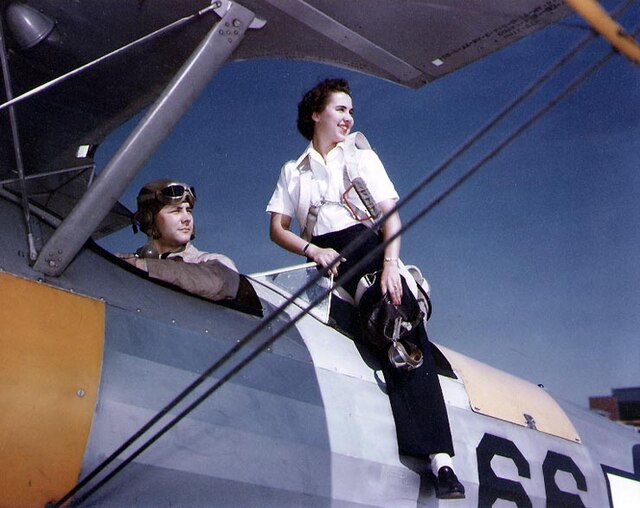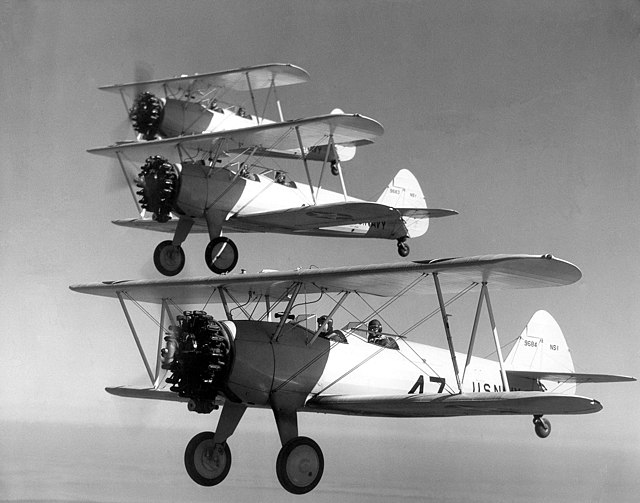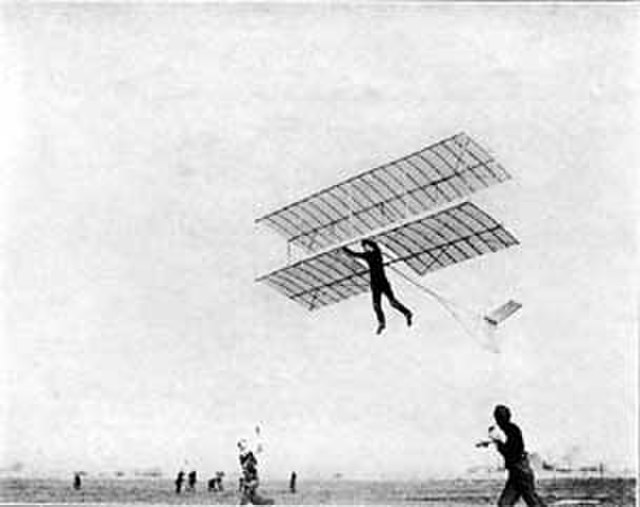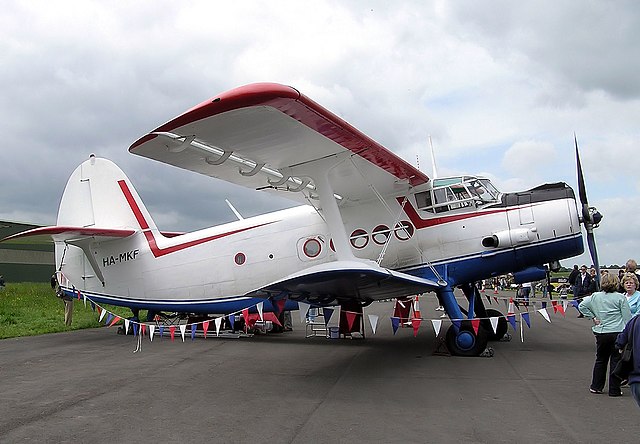The Stearman (Boeing) Model 75 is an American biplane formerly used as a military trainer aircraft, of which at least 10,626 were built in the United States during the 1930s and 1940s. Stearman Aircraft became a subsidiary of Boeing in 1934. Widely known as the Stearman, Boeing Stearman, or Kaydet, it served as a primary trainer for the United States Army Air Forces, the United States Navy, and with the Royal Canadian Air Force as the Kaydet throughout World War II. After the conflict was over, thousands of surplus aircraft were sold on the civilian market. In the immediate postwar years, they became popular as crop dusters and sports planes, and for aerobatic and wing walking use in air shows.
Boeing-Stearman Model 75
A WAVE in a Boeing Stearman N2S United States Navy training aircraft
United States Navy N2S-2 at NAS Corpus Christi, 1943
United States Navy NS-1s of the NAS Pensacola Flight School, 1936
A biplane is a fixed-wing aircraft with two main wings stacked one above the other. The first powered, controlled aeroplane to fly, the Wright Flyer, used a biplane wing arrangement, as did many aircraft in the early years of aviation. While a biplane wing structure has a structural advantage over a monoplane, it produces more drag than a monoplane wing. Improved structural techniques, better materials and higher speeds made the biplane configuration obsolete for most purposes by the late 1930s.
First World War Sopwith Camel biplane
1920s biplane hang glider
The Gloster Gladiator, a World War II fighter biplane
Soviet Antonov An-2 biplane from the 1940s








